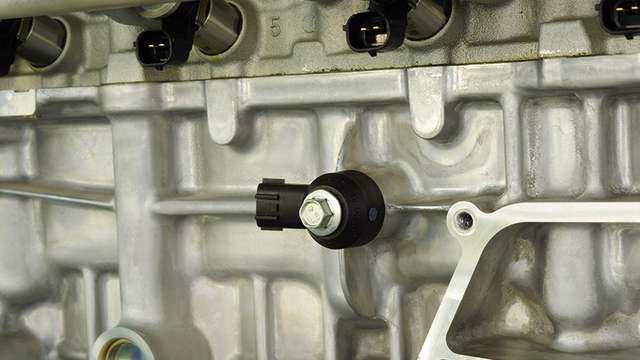- engine
The knock sensor: What is it and how does it work?

Updated 11 Oct 2019
Joel Ilton

The knock sensor is probably something you’ve never even heard of, unless your mechanic has told you there’s a problem.
And no, it’s not something that will warn you when there's a door-to-door salesman about to interrupt you in the middle of watching football on a saturday afternoon - it has a much more important job than that.
The knock sensor is designed to ‘listen’ to what is happening inside the engine and relays this information to the engine control unit (ECU) which then adjusts the timing as needed.
It is usually located on the side of the engine block but can also be located on the cylinder head or intake manifold. Why is it called a knock sensor? It’s time to get technical!
You may have noticed that your engine can make some strange noises under acceleration - this can sound like a rattle or tapping sound, similar to a ball bearing inside a can of spray paint, and is known by terms such as pinging, pinking, detonation or spark knock.
This occurs when pockets of the air and fuel mixture inside the engine pre-ignite, that is to say before the spark plug has fired.
This creates smaller explosions inside the cylinder, which increases the pressure on the piston.
If this occurs frequently, it can cause damage to the top of the piston as well as the inside of the cylinder.
In extreme cases, this can cause catastrophic engine failure.
It’s the job of the knock sensor to pick up on these occurrences and reduce the engine timing (also known as retarding the timing) to prevent any damage to these components.
The knock sensor operates on an electrical principle, using a piezoelectric crystal that creates voltage when it vibrates.
When this voltage is detected by the ECU, it knows the engine is experiencing detotation and reduces the timing until the crystal stops vibrating.
This cycle happens hundreds of times a second as the ECU is constantly monitoring and adjusting the timing to produce the maximum amount of power and fuel efficiency without causing engine damage.
When the knock sensor sensor fails, the ECU will no longer be able to accurately control the timing to prevent detonation, so will automatically limit the performance of the engine for safety.
This is known as ‘limp’ mode, and driving in this condition can leave you in a vulnerable state on the road.
You will also see an engine light on the dashboard indicating there is an issue.
Fuel economy will also suffer if the knock sensor is not operating correctly, as the ECU will be adding more fuel to help stave off pre-ignition.
You may be asking yourself if there is any way to prevent detonation from occurring? The answer is yes.
The easiest way is to use a higher octane fuel, also known as premium fuel.
This has a higher combustion temperature rating than lower octane fuels, so is less likely to suffer from pre-ignition.
Keeping your car well maintained is also key in preventing this issue, so servicing on time and using the correct parts and lubricants for your vehicle will keep your engine singing along and stave off the dreaded knocking sound!
If only it could do something about those annoying salesman.

Written By
Joel Ilton
Finding a passion for cars from a young age, Joel carried out work experience as a mechanic whilst at school before starting an apprenticeship after finishing year 12.
Joel is now the Workshop Manager at Robina Volkswagen.